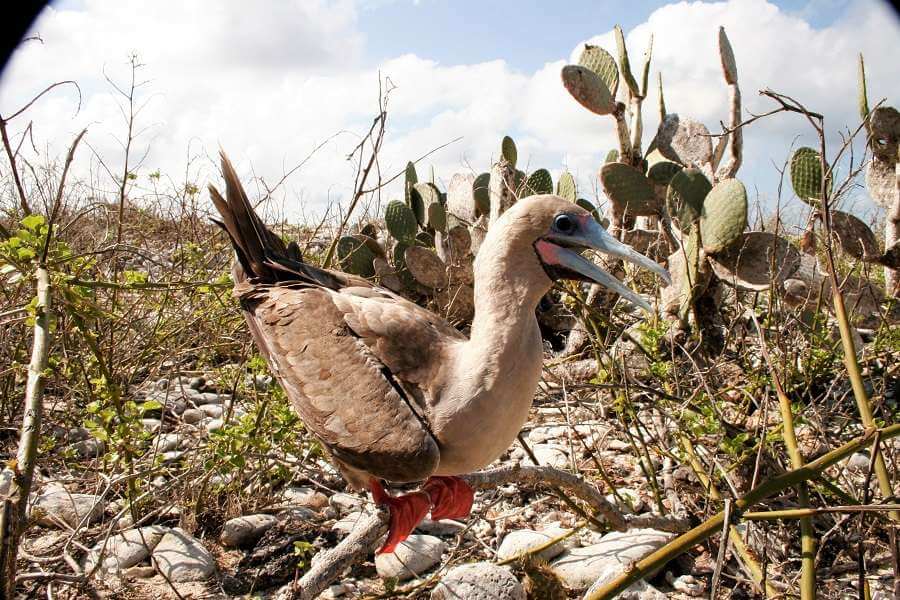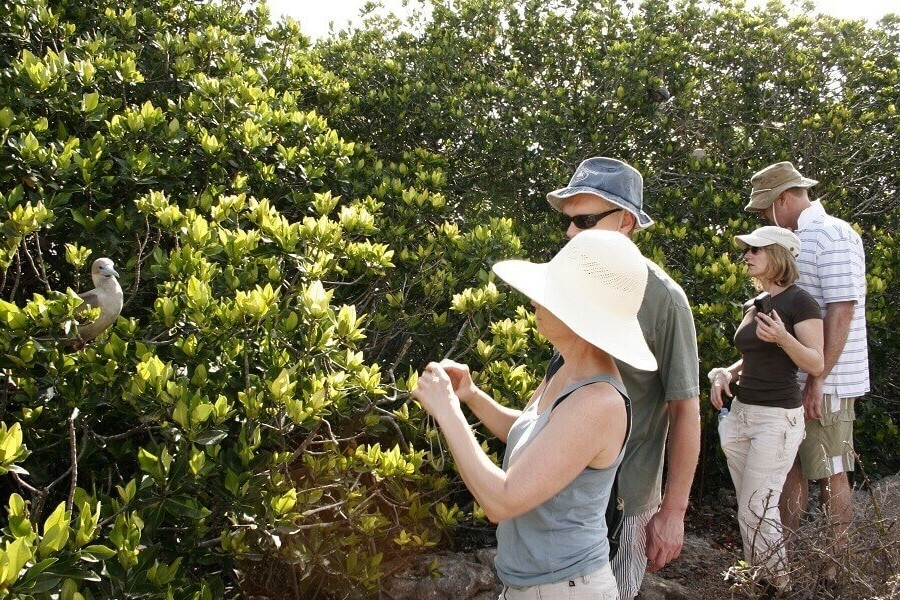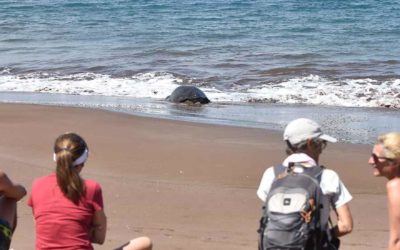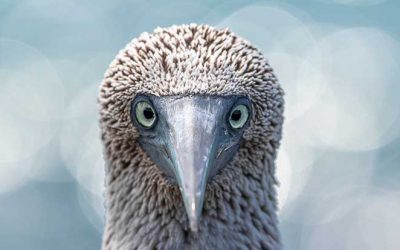The Mysterious Red-footed Booby
Stay up to date with our most recent news and updates

Piquero de patas rojas
Scientific name: Sula Sula
Biological taxon: Native
Lifespan: 22 years
IUCN Red List Status: Least Concern (LC)
Range: Globally distributed. It is found in all tropical and subtropical regions of the Atlantic, Pacific, and Indian oceans.
The mysterious red-footed booby is the smallest of all the booby species, and it is precisely on the Galapagos Islands that the world’s largest colony of these seabirds is found, around 30,000 individuals.
However, it is important that you know that it will not be easy to observe them since they are only found on certain islands 🏝️ of the archipelago such as Darwin and Wolf, Genovesa, Gardner de Floreana, and San Cristóbal in Punta Pitt. If you take a cruise through the Islands, you will surely be able to observe them in their natural environment.
A bird that nests in the trees
This seabird nests in the canopy of small trees 🌳 or shrubs, unlike its relatives, the ground-nesting blue-footed boobies. Because of this, the red-footed booby has longer toes to grasp branches. The male builds a nest with some twigs and sticks that are accumulated.
Like their relatives, their English name (Red-footed Booby) comes from the Spanish word “bobo” which means fool or clown about their clumsy movements on the ground and because they are not afraid when humans approach.
Courtship and mating ritual
For the red-footed booby mating, the male performs a ritual called “pointing to the sky”, where he courts the female by throwing her head back until her beak points directly upward.
Nesting and incubation
The nesting season is between January and September, usually in these months is where you can most observe them. Females usually lay 1 to 2 eggs every 15 months, the incubation period is about 45 days. Both parents incubate the eggs and use their feet filled with blood vessels (warmblood) to maintain the temperature of the eggs. When the egg hatches 🐣, both parents feed the chick by regurgitating the food.
Types of Red-footed Boobies
The red-legged booby has two morphotypes or color variations on its body, the brown morphotype which is the most common in the Galapagos (brown body and white belly), and the white morphotype (white body with black on the flight feathers).
In the white morphotype, the red legs are what makes it possible to differentiate them from the Nazca boobies since they do not have red legs.
Spectacular diving birds 🤿
Red-footed boobies possess amazing adaptations, such as a torpedo-shaped body, nostrils that can be closed, and long wings that can wrap around their body when submerged in water.
They can fly 140-160 kilometers (90-100 miles) from their colonies into open water to search for some food. Their diet includes small fish 🐟, squid 🦑 that are on the surface of the water, and flying fish that they caught in the air.
Other Interesting facts
- When red-footed boobies lay 2 eggs 🥚🐣 obligate siblicide occurs (the largest chick kills the smallest).
- Red-footed boobies hunt in association with oceanic predators such as tuna and dolphins.
- In the Galapagos Islands, when boaters see red-footed boobies, they often find schools of billfish. (Useful for sport fishing 🎣)
- Their colonies are only located on islands where the Galapagos hawk is not found 🦅.

Without a doubt, it is a very unique endemic species, which you can discover if you decide to visit the wonderful Galapagos Islands and tour them on one of the best available cruises or even on an island-hooping tour.
Don’t stop your wanderlust!
📌 Discover our best deals to the Galapagos Islands! Click here.
If you like this post, share it with your friends, and subscribe to our newsletter to stay updated with interesting news from Galapagos 🐢, Ecuador 🇪🇨 , and other magical destinations in South America 🌎.
RELATED POST
Traveling to the Galapagos Islands in 2022: tips, what to do, and how to book the best trip ever
Learn more about the Galapagos Islands and how to make the most of your trip to this natural destination with this quick guide.
Blue-footed Booby Interesting Facts
The blue-footed boobies of the Galapagos Islands, as beautiful as they are unique. Discover here some interesting facts about them.




